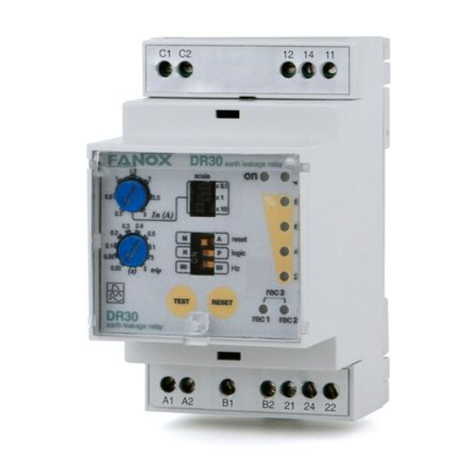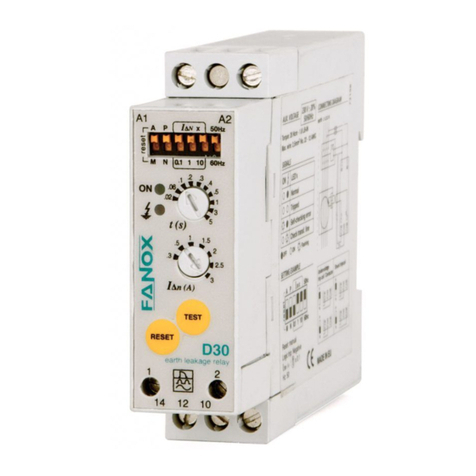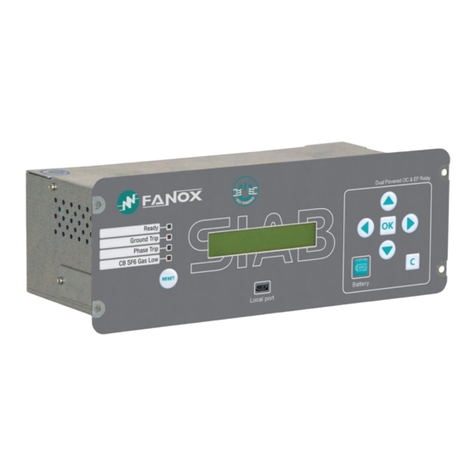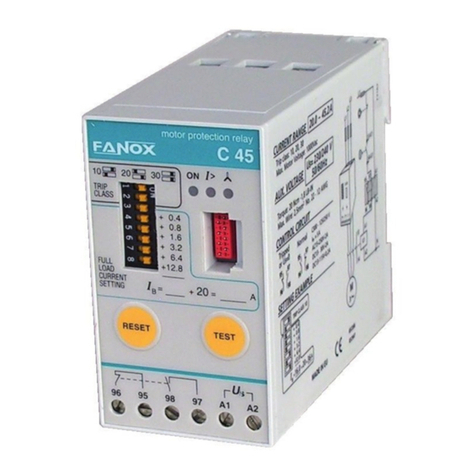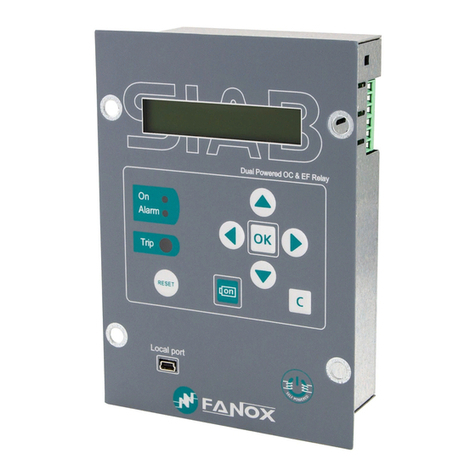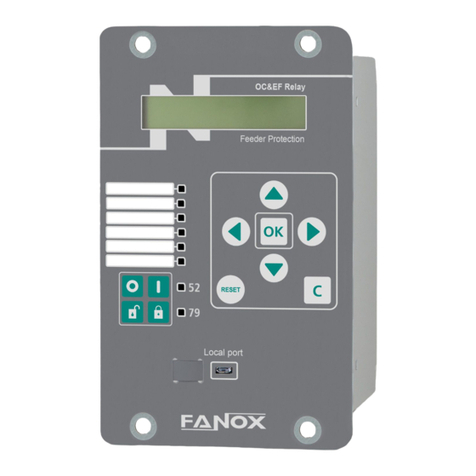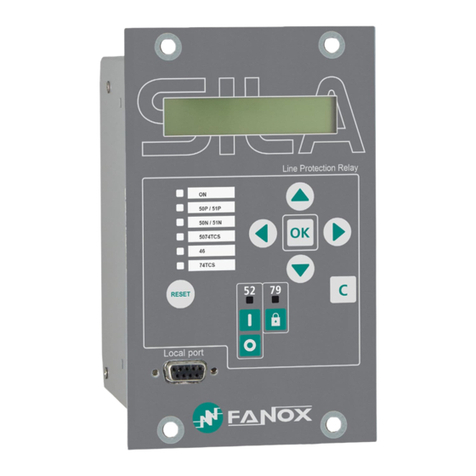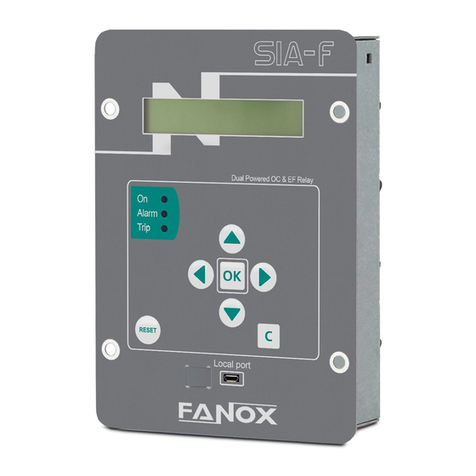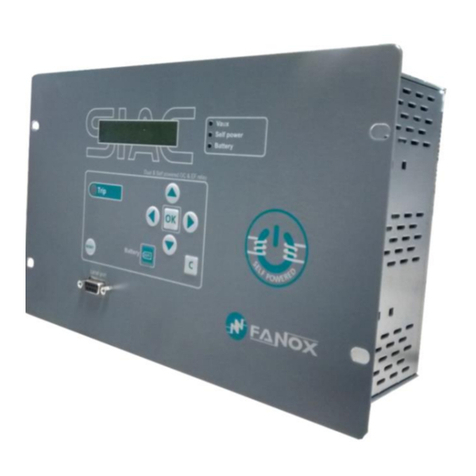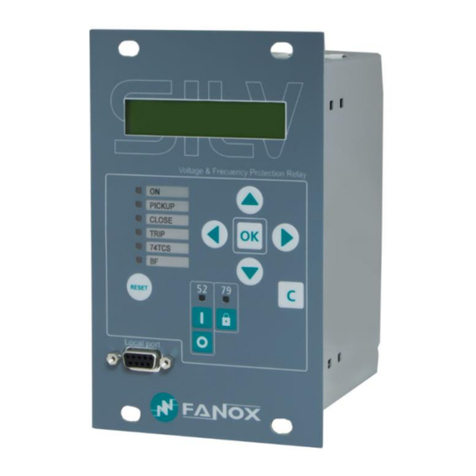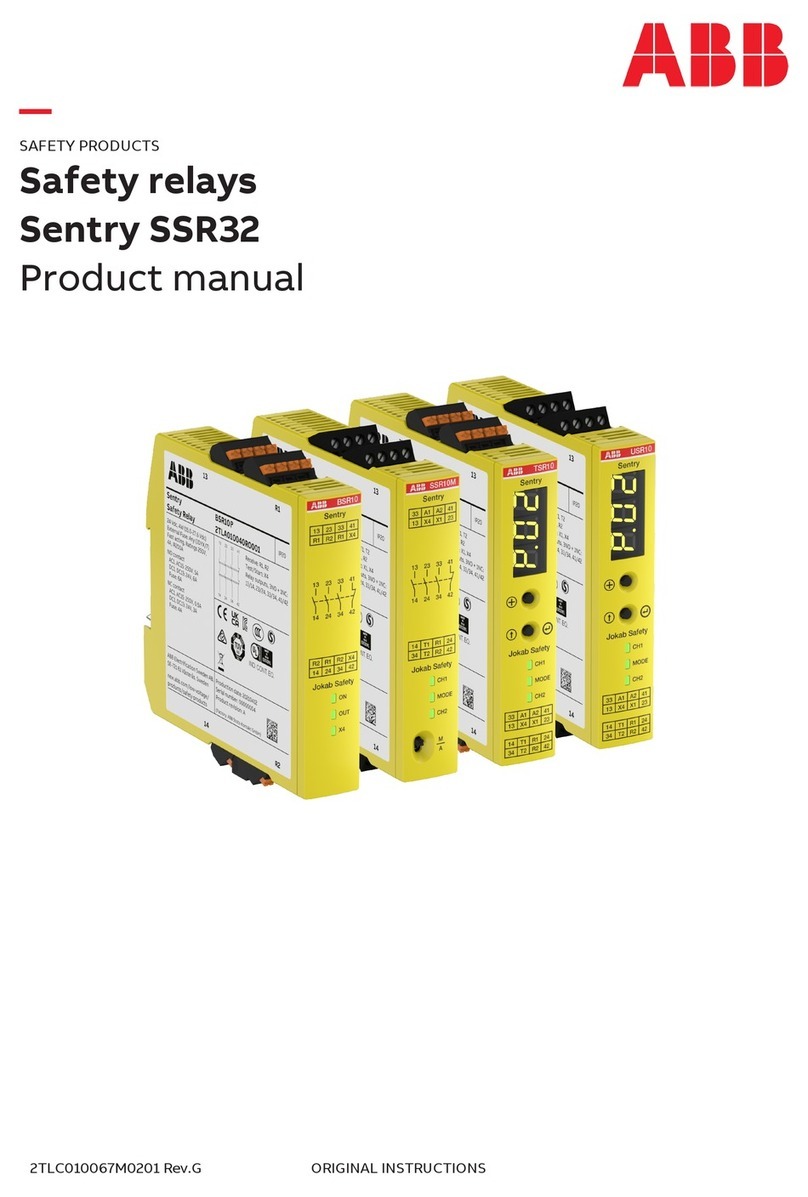www.fanox.com Rev. 01 3/17
1. MODBUS RTU PROTOCOL
Communication parameters are:
Modbus RTU:
•Address and Baudrate
•8 data bits
•No parity
•1 stop bit
This document describes the steps to follow to read and write data on the SIA-F relay, as per the Modbus
protocol. This memory map is only valid for one piece of equipment and one version of the memory. The
positions of existing objects in the memory remain fixed from one version to the next, but new objects will
naturally have new addresses which will, in turn, remain fixed in future versions. The memory map is
described further on.
The standard Modbus protocol is used, so any program or PC can communicate easily with the equipment.
The SIA-F always acts as a slave, which means that it never initiates communications. The master is
always responsible for initiating communications.
Only a subset of the Modbus functions is implemented:
•Reading function 3.
•Writing function 16.
The MODBUS/RTU protocol is independent from the hardware. Therefore, the physical layer can exist in
different hardware configurations: RS232, RS485, fibre optic or Ethernet.
Specifically, the relay has a front RS232 port and, as an option, a rear RS485 port. The data stream in any
of the configurations is “half-duplex”.er
Each byte of data is transmitted asynchronously and is made up of: 1 start bit, 8 data bits, 1 stop bit and
1 parity bit, if this is how it is programmed. Therefore, the data has 10 or 11 bits, depending on whether it
includes parity.
If the relay only offers with Modbus on the front port, the address (1 to 247) is configurable but the rest of
the paarmeters are fixed and equal to: baudrate 19200, No parity and stop bit 1.
If the relay offers RS485 Modbus protocol the the address (1 to 247) and the baudrate (4800, 9600, 19200
or 38400) con be but the rest of the parameters are fixed: without parity and with 1 stop bit.
The master must know the address of the slave that it is going to communicate with. No unit will act on
requests from the master if the message is not addressed to them. The exception is when the 0 address,
or “broadcast” address, is used, in which case the relay will act but will not send an answer of any type.
Communications are made in packages or frames, which are groups of data that are sent asynchronously.
The master transmits a frame to the slave, and the slave then replies with another frame (except in the
case of “broadcast” messages).
The end of the frame is marked by a dead time or silence time in the communication medium. The length
of this time of silence varies depending on the transmission speed, as it is equivalent to 3 characters.
The following table shows the generic package format that is valid for transmission and reception.
However, each function has its own peculiarities, as will be described further on.

